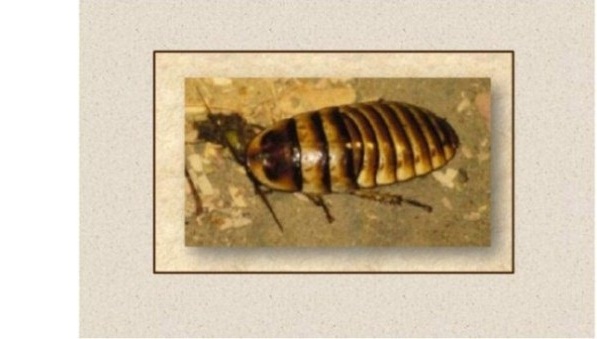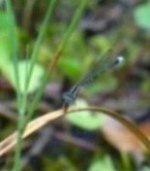Invertebrates at Berenty |

Hissing cockroach (Elliptorhina javanica) © photo by George Williams
There has been little systematic study of Berenty's invertebrates. Philip S. Ward made a collection of ant species, and Michael Irwin
has identified flies from Berenty, among other regions of Madagascar.
An invertebrate often noticed by visitors is the flatid bug, Phromnia rosea. The colonial larvae are flower-mimics, with white
"bustles" made of long-chain sugars. The adults are also colonial, their wings like a bunch of rosy petals. Oddly, no actual flowers resemble
the bug colonies: they seem to mimic a flower-like gestalt rather than specific plants. The sugary secretions are a favorite food of ringtails and other lemur species which lick exudate from branches below the colony.
A species which may well be a keystone in the gallery forest ecosystem is Aphaenogaster swammerdami, the housekeeper ant. They live in huge colonies, with several exit holes some 30 cm across, often set in the middle of trails. They are scavengers of protein which keep the
forest clean. Around their holes one finds shreds of snake-skin, feathers, and sometimes bones of small mammals.
Madagascar hissing cockroaches, Gromphadorhina portentosa, are common now in western laboratories. The cockroaches are handsomely tiger-striped, and may be found in the rainy season under logs or on the rough bark of Berenty tamarind trees. They hiss both as territorial and as sexual signals to each other. They are one of the few invertebrate species that uses its respiratory tract for noise, as vertebrates do.
_MASTimg_BreakfastMale_(DC).jpg)
_MASTimg_BerentyWebsiteMasthead.jpg)




 Dragonfly © photo
Dragonfly © photo